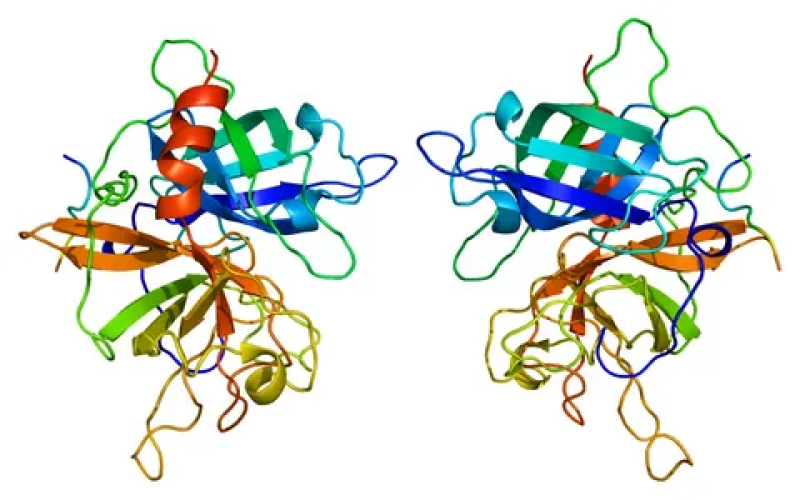Urokinase is a crucial enzyme widely used in medical treatments for dissolving blood clots and managing thrombotic conditions. As a fibrinolytic agent, urokinase plays a significant role in restoring blood flow in patients suffering from pulmonary embolism, myocardial infarction, deep vein thrombosis, and other clot-related disorders. The therapeutic use of urokinase has revolutionized acute cardiovascular care, providing an efficient alternative to surgery and other invasive interventions.
Urokinase Biochemical Properties and Mechanism of Action
Urokinase is a serine protease enzyme that activates plasminogen to plasmin, the primary enzyme responsible for breaking down fibrin clots. Derived from human kidney cells or recombinant DNA technology, urokinase directly converts plasminogen at the site of the thrombus, facilitating targeted clot dissolution without widespread systemic effects commonly seen with older thrombolytic drugs. This specificity in the mechanism minimizes the risk of bleeding complications, making urokinase a preferred choice in various emergency clinical scenarios. Its biochemical efficiency and ability to restore blocked bloodstream pathways rapidly underscore its therapeutic significance.
Clinical Applications of Urokinase in Thrombolytic Therapy
Urokinase is primarily utilized in emergency medicine for prompt thrombolytic therapy aimed at re-establishing blood flow in blocked arteries and veins. In patients who have experienced acute myocardial infarction (heart attack), the administration of urokinase helps dissolve the occlusive thrombus, thereby preventing permanent cardiac tissue damage. Similarly, in cases of pulmonary embolism, where blood clots constrict circulation within the lungs, urokinase treatment can rapidly reduce clot burden to improve respiratory function and reduce mortality risk. Beyond cardiovascular emergencies, urokinase is also employed in treating deep vein thrombosis and clearing occluded catheters or dialysis access points, illustrating its wide-ranging clinical utility.
Global Trends and Market Dynamics for Urokinase Products
The global demand for urokinase continues to rise due to the growing prevalence of cardiovascular diseases and an aging population susceptible to thrombotic disorders. Advances in biotechnology have spurred the development of recombinant forms of urokinase, offering enhanced purity, reduced immunogenicity, and standardized production processes. The commercial availability of generic urokinase products has also increased its accessibility across different healthcare settings worldwide. Market trends indicate a shift towards more cost-effective and safer thrombolytic agents, facilitating expanded use in outpatient settings as well as hospitals. Understanding these market dynamics provides insight into investment opportunities and potential challenges faced by manufacturers and distributors of urokinase-based therapies.
Regulatory Landscape and Compliance Requirements for Urokinase Usage
The regulatory guidelines governing urokinase production and clinical usage are stringent due to the high-risk nature of thrombolytic therapy. Regulatory agencies require comprehensive clinical trials demonstrating the safety, efficacy, and quality of urokinase formulations before granting market approval. Post-market surveillance ensures continued compliance and monitoring of adverse effects. Manufacturers must adhere to Good Manufacturing Practice (GMP) standards and maintain rigorous quality control throughout the production lifecycle. Awareness of these regulatory frameworks is crucial for pharmaceutical companies involved in developing or marketing urokinase products and for healthcare providers administering these therapies to ensure patient safety.
Navigating Comprehensive Thrombolytic Market Research Reports on Urokinase
For businesses, healthcare analysts, and researchers seeking detailed market insights, extensive market research reports covering the thrombolytic agents sector offer valuable data on product segmentation, geographical demand, competitive landscape, and growth forecasts. These reports provide deep analytical perspectives on emerging trends in urokinase development, including innovations in drug delivery systems, emerging recombinant variants, and shifts in healthcare policies affecting the scope of thrombolytic therapy adoption. Accessing these detailed studies helps stakeholders make informed decisions regarding investments, strategic planning, and partnership opportunities within the fast-evolving urokinase market.
Economic Impact and Commercial Prospects of Urokinase Therapies
The commercial viability of urokinase therapies is influenced by factors such as cost of production, reimbursement policies, and healthcare infrastructure. As thrombolytic treatments are included in essential medication lists, funding and insurance coverage substantially affect widespread adoption. Pricing strategies are also calibrated considering competition from alternative fibrinolytic agents and emerging anticoagulants. Additionally, increased awareness about timely thrombolytic intervention among healthcare professionals enhances market penetration. These economic variables are critical to understanding the trajectory of urokinase commercialization and investment potential within pharmaceutical and medical device industries.
Future Outlook and Innovations Driving Urokinase Growth
Technological advancements and ongoing research are paving the way for novel urokinase formulations with improved pharmacokinetics and reduced adverse events. Nanotechnology-based delivery systems, sustained-release formulations, and combination therapies are under active development to enhance patient outcomes and convenience of administration. Furthermore, expanding indications for urokinase in managing stroke-related clot dissolution and chronic cardiovascular conditions highlight its growing therapeutic scope. The integration of precision medicine approaches also offers promising avenues for individualized urokinase therapy, further enhancing efficacy and safety profiles. Monitoring these innovations is vital for predicting the future landscape of urokinase treatment and related market performance.
Get This Report in Japanese Language: ウロキナーゼ
Get This Report in Korean Language: 우로키나제
Read More Articles Related to this Industry- Natural vs. Synthetic Detox Supplements: Which Is Better?
About Author:
Ravina Pandya, Content Writer, has a strong foothold in the market research industry. She specializes in writing well-researched articles from different industries, including food and beverages, information and technology, healthcare, chemical and materials, etc. (https://www.linkedin.com/in/ravina-pandya-1a3984191)
